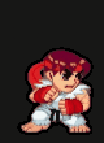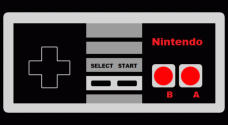Zelda II: The Adventure of Link - Revisiting the Black Sheep NES Classic
Remember the thrill of exploring Hyrule for the first time on your trusty Nintendo Entertainment System? The original Legend of Zelda was a revelation, a sprawling adventure unlike anything else. Then came the sequel, Zelda II: The Adventure of Link, and it... well, it threw us all for a loop.
Released less than a year after the first game in Japan, Zelda II wasn't just a continuation of Link's quest to save Princess Zelda; it was a bold, some might say jarring, departure from the formula. It's the game fans either love or hate, the acknowledged "black sheep" of the series, and a bonafide retro challenge that still sparks debate today.
What Makes Zelda II So Different?
Stepping into The Adventure of Link after the first game felt like entering a parallel dimension of Hyrule. Gone was the top-down perspective for combat and dungeon exploration. Instead, Nintendo introduced a hybrid system:
- Overworld Map: You still navigated a top-down map between locations, complete with random enemy encounters represented by little blobs (which would then switch to side-scrolling view!).
- Side-Scrolling Action: Towns, palaces (dungeons), caves, and combat encounters all took place from a side-view perspective, turning Link into a platforming hero with a sword.
- RPG Mechanics: This was perhaps the biggest shock. Link gained experience points (EXP) from defeating enemies! You could level up his Attack, Magic, and Life stats, a system unique to this main series title. Finding Heart and Magic Containers still boosted your maximums, but the core progression was tied to grinding EXP.
This blend felt more like an action RPG, drawing comparisons to games like Castlevania II: Simon's Quest. It required a completely different skillset than its predecessor, demanding precise platforming and strategic side-view combat.
The Infamous Difficulty of Hyrule
Let's be honest, Zelda II is tough. Like, really tough, especially at the start. Link begins his journey incredibly weak, and early enemies can feel like brick walls. The combat system, while strategic, requires timing and knowing when to stand or crouch to hit or block enemies like the notorious Iron Knuckles.
Adding to the challenge were limited lives. Run out of lives, and you're sent back to the beginning of the game (or at least the North Castle area), losing any accumulated experience points towards the next level (though thankfully, levels gained were permanent in the Western release). This unforgiving structure was a holdover from the arcade era and the Famicom Disk System's design, making every encounter feel high-stakes.
Many players bounced off Zelda II early on, frustrated by its difficulty curve and lack of hand-holding. If you're tackling it today, many veterans will tell you the original game manual is your best friend – it actually provided crucial guidance for the confusing early hours!
Its Place in Hyrule's History
Despite its divisive nature, Zelda II wasn't just a weird side-step; it introduced elements that became staples in the Legend of Zelda series:
- Magic Meter: This game was the first to feature a dedicated magic meter for casting spells.
- The Triforce of Courage: While the first game had Wisdom and Power, Zelda II is where Link claims the Triforce of Courage, solidifying his connection to it in future titles.
- Dark Link: Link's shadowy doppelgänger first appeared as a boss in the Great Palace and has returned in various forms throughout the series.
- More Complex NPCs: Towns were more interactive, with characters offering hints and even side-quests leading to new spells.
- Town Names: Several town names in Zelda II were later used for the Sages in Ocarina of Time.
The plot itself is a direct sequel, following a 16-year-old Link as he awakens an ancient Princess Zelda (a different one!) cursed by a sleeping spell. His quest involves placing crystals in palaces to open the path to the Triforce of Courage.
How to Revisit The Adventure of Link Today
Feeling nostalgic or brave enough to finally conquer this beast? Zelda II is surprisingly accessible on modern platforms:
- Nintendo Switch Online: Subscribers can play the NES version for free.
- NES Classic Edition: The mini console includes the game.
- Virtual Console: It was released on the 3DS and Wii U eShops (though these stores are now closed, if you bought it previously, you can still play).
- Compilations: It appeared on the GameCube (Legend of Zelda: Collector’s Edition) and Game Boy Advance (Classic NES Series).
- Emulation: Playing via an emulator on PC or retro handhelds is another popular method, offering save states and rewind features that can make the difficulty a little more manageable (purists look away!).
- Game & Watch: The recent Game & Watch: The Legend of Zelda handheld includes the NES version.
Whether you play it on original hardware, a modern console service, or an emulator, having access to a digital version of the original manual can significantly improve the early game experience.
Is Zelda II Worth Playing Today?
Absolutely! While it might not fit the mold established by the rest of the series, Zelda II: The Adventure of Link is a fascinating piece of gaming history. It’s a challenging action RPG with a unique feel, memorable music, and some truly tough boss fights.
For retro enthusiasts, it offers a stiff but rewarding test of skill. For Zelda fans, it provides crucial lore and the origin of several series mainstays. It's a reminder that even iconic franchises aren't afraid to experiment.
So, dust off your pixel-perfect sword, brush up on your Downward Stab, and prepare to face the challenge. Hyrule awaits, and this time, it's a side-scrolling showdown!
FAQ
Q: Why is Zelda II so different from other Zelda games?
A: The developers intentionally changed the formula, shifting from a top-down adventure to a game that heavily incorporates side-scrolling action, platforming, and traditional RPG elements like experience points and leveling up stats.
Q: Is Zelda II considered canon in the Zelda series?
A: Yes, Zelda II: The Adventure of Link is considered a canonical entry in the main Legend of Zelda timeline, taking place after the original game.
Q: How difficult is Zelda II?
A: It's widely considered one of the most difficult games in the main series, particularly the early portions. It features challenging combat, limited lives, and requires careful exploration and grinding.
Q: What important elements did Zelda II introduce to the series?
A: Key introductions include the magic meter, the Triforce of Courage, the character of Dark Link, more complex NPC interactions, and spells.


